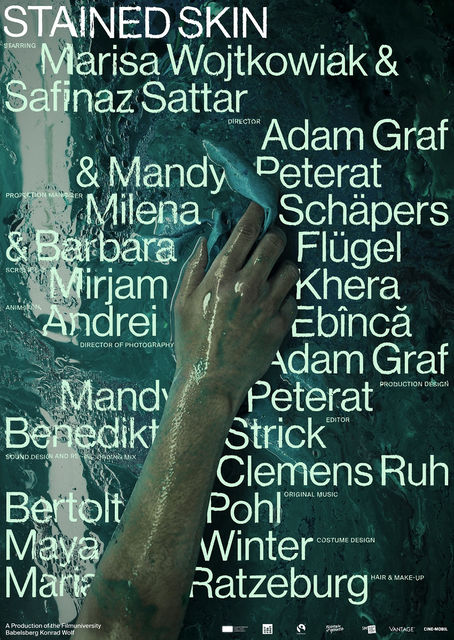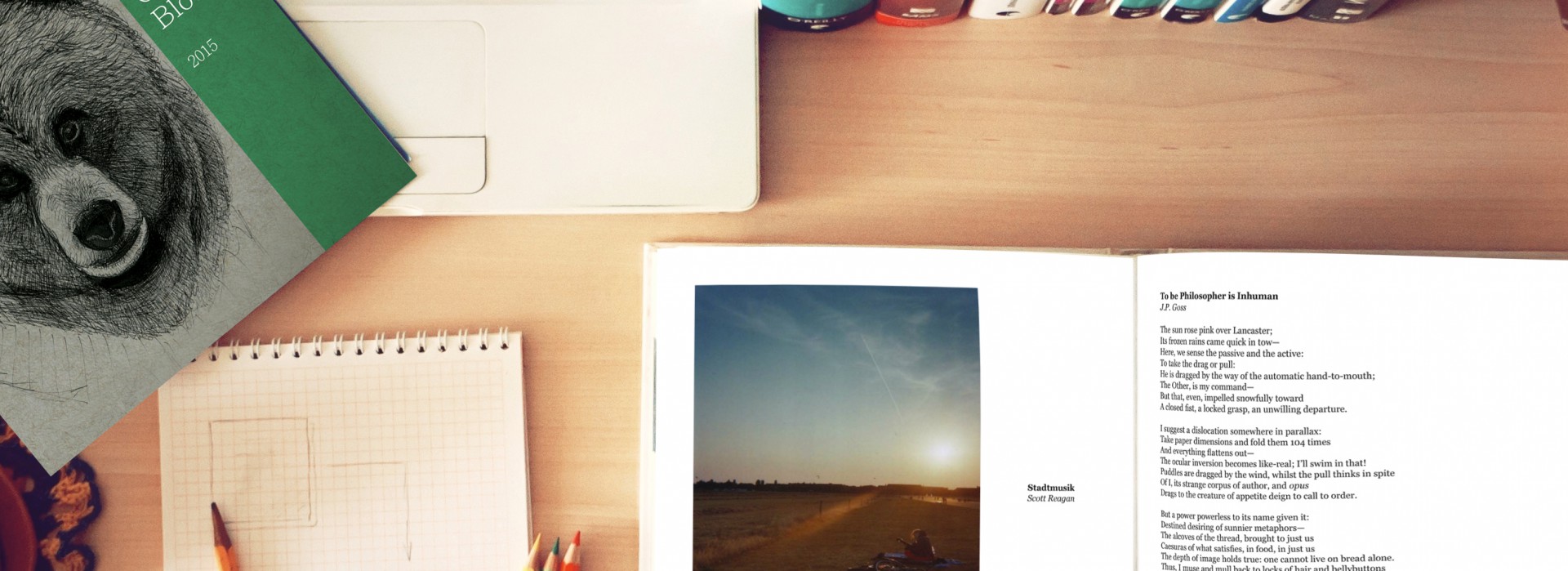Reviewed by Isaac Fox

Adam Graf and Mandy Peterat’s 2021 short film “Stained Skin” plays out in a grimy, windowless factory filled with machine sounds. It’s not clear where (or when) this factory is, or what’s happening outside of it. For Alba (played by Marisa Wojtkowiak) and Samy (Safinaz Sattar), there is no outside world, no outside life. Not only do they work endless hours in the factory—feeding fabric through machines and dyeing it, ad infinitum—they also sleep in one of its dark corners, behind heaps of inventory in a claustrophobic room with concrete walls.
As the two work, Alba—who seems to play some kind of mentor role in their relationship—tells Samy a story. It’s a fairy tale about Nanami, a girl who lives and works at the bottom of the ocean, collecting pearls. Her people’s rulers have stolen their voices to silence them and keep them working.
Alba, Samy, and the factory all appear in live action, but this undersea world—where catfish and octopi are the enforcers of oppression—is animated in elemental near-monochrome shades. Nanami and her fellow laborers glow white in a shadowy world.
This premise sounds like a rather simplistic parable about hope. However, in the hands of Graf and Peterat, it becomes something more complex and ambiguous. Alba’s fairy tale about hope initially ends in failure and despair. Nanami sneaks past the catfish and wins a few moments at the water’s surface, where she watches her people’s rulers enjoy themselves and dance. But then an octopus pulls her back down and imprisons her, and that’s that; the end.
With a little prodding, Samy convinces Alba to tell a more hopeful version of the story. But even this cheerier edition ends in uncertainty (and isn’t much cheerier anyway). The oppressive rulers die, and Nanami and the other girls working alongside her free themselves, but their world is damaged; “the ocean [is] still black, not blue”; and the exact details of the girls’ fates are unknowable. They survive, though, and “they [swear] themselves to never touch a single pearl again.” In the next scene—the film’s last—Alba and Samy are still in the textile factory, doing the same work they were doing in the film’s early scenes.
“Stained Skin” pushes viewers to ask big questions: Can hope rescue the oppressed? Can storytelling start revolutions? Are hope and storytelling one and the same, and are they enough? And in response, the film frowns at us and says, Quiet down—it’s not that simple. It’s not that easy.
Isaac Fox is a student at Lebanon Valley College, where he majors in English and creative writing. He spends his free time reading and writing things that aren’t assigned, shooting pictures, and playing the clarinet. His fiction and photography have appeared in Rune Bear, Heart of Flesh, and Rejection Letters, and he has work forthcoming in Tiny Molecules. You can find him on Twitter at @IsaacFo80415188.


